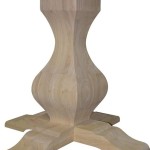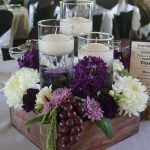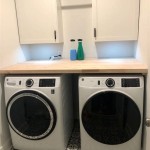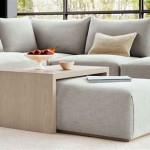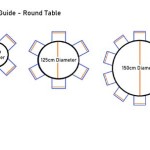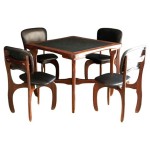End Tables With Marble Top: An Exploration of Style and Function
End tables with marble tops represent a confluence of aesthetic appeal and practical utility within interior design. These pieces of furniture serve multiple purposes, functioning as convenient surfaces for lamps, beverages, books, and decorative objects, while simultaneously contributing to the overall style and sophistication of a room. The inherent elegance of marble, combined with the structural stability of various base materials, makes these end tables a popular choice for both residential and commercial spaces.
The selection of a marble-topped end table involves careful consideration of several factors. The size and shape of the table should complement the proportions of the room and the surrounding furniture. The type of marble, the color and veining patterns, and the material of the base all play a crucial role in determining the table's overall aesthetic impact. Furthermore, understanding the maintenance requirements of marble is essential for preserving its beauty and longevity.
Marble itself is a metamorphic rock formed from recrystallized carbonate minerals, most commonly calcite or dolomite. It is prized for its unique veining patterns, which are created by the presence of various mineral impurities during its formation. These veining patterns, along with the inherent color variations within the stone, contribute to the distinctive character of each piece of marble, making every marble-topped end table a unique work of art.
Aesthetic Versatility of Marble End Tables
The aesthetic versatility of marble end tables stems from the wide range of colors and veining patterns available. White marble, such as Carrara or Calacatta, is a classic choice that evokes a sense of timeless elegance and sophistication. These marbles often feature subtle grey veining, adding visual interest without overwhelming the space. Black marble, such as Nero Marquina, offers a more dramatic and contemporary look, often featuring striking white veining that creates a bold contrast.
Beyond the traditional white and black varieties, marble is available in a spectrum of colors, including green, pink, brown, and beige. Each color variation possesses its own unique character and can be used to complement a wide range of interior design styles. Green marble, such as Verde Guatemala, adds a touch of natural beauty and can be particularly effective in spaces inspired by nature. Pink marble, such as Rosa Portugués, offers a softer, more romantic aesthetic, while brown and beige marbles provide a warm and inviting feel.
The selection of the marble color and veining pattern should be guided by the overall design scheme of the room. For a minimalist or contemporary space, a clean white marble with subtle veining may be the most appropriate choice. In a more traditional or eclectic space, a bolder marble with more pronounced veining could add a touch of drama and personality. The color of the marble should also complement the other colors in the room, creating a cohesive and harmonious aesthetic.
The shape of the end table also contributes to its aesthetic impact. Round end tables tend to soften the lines of a room and can be particularly effective in smaller spaces. Square or rectangular end tables offer a more structured and formal look and can be used to create a sense of balance and symmetry. The height of the table should be appropriate for the height of the surrounding furniture, such as sofas and chairs, ensuring that it is both visually appealing and functionally convenient.
Base Materials and Design Considerations
The material and design of the base of a marble-topped end table play a crucial role in its overall aesthetic appeal and structural integrity. Common base materials include metal, wood, and acrylic, each offering its own unique set of advantages. Metal bases, particularly those made of stainless steel or wrought iron, are known for their durability and contemporary aesthetic. Wood bases provide a warmer, more traditional look, while acrylic bases offer a sleek and modern appeal.
The design of the base should complement the style of the marble top and the overall design scheme of the room. A simple and minimalist base, such as a stainless steel pedestal, can be a good choice for a contemporary space. A more ornate base, such as a wrought iron scroll design, may be more appropriate for a traditional or Victorian-inspired room. The color and finish of the base should also be carefully considered, ensuring that it complements the color of the marble and other elements in the room.
The structural integrity of the base is also a critical consideration. The base must be strong enough to support the weight of the marble top without wobbling or tipping. The joints between the base and the marble top should be securely fastened to prevent the marble from shifting or coming loose. The height and width of the base should be proportionate to the size of the marble top, ensuring stability and balance.
In addition to the primary materials, some marble-topped end tables incorporate decorative elements, such as inlays, carvings, or painted finishes. These embellishments can add a touch of personality and visual interest to the table, making it a unique statement piece. However, it is important to ensure that these decorative elements are executed with skill and craftsmanship, and that they complement the overall style of the table and the room.
Maintenance and Care of Marble
Marble, while undeniably beautiful, is a porous material that is susceptible to staining and etching from acidic substances. Proper maintenance and care are essential for preserving its beauty and longevity. Regular cleaning with a pH-neutral cleaner and sealing the surface periodically can help protect the marble from damage.
The first line of defense against staining is to promptly wipe up any spills that occur on the marble surface. Acidic substances, such as lemon juice, vinegar, and coffee, can etch the surface of the marble, leaving a dull or discolored mark. Even water can leave a ring if it is allowed to sit on the surface for an extended period of time. Use a soft cloth or sponge to wipe up spills immediately, and avoid using abrasive cleaners or scouring pads, which can scratch the marble.
For regular cleaning, use a pH-neutral cleaner specifically designed for marble. These cleaners are formulated to gently remove dirt and grime without damaging the marble surface. Avoid using harsh chemicals, such as bleach or ammonia, which can etch or discolor the marble. Apply the cleaner according to the manufacturer's instructions, and rinse thoroughly with clean water. Dry the surface with a soft cloth to prevent water spots.
Sealing the marble surface is an important step in protecting it from staining and etching. A sealant creates a protective barrier that prevents liquids from penetrating the marble. The frequency with which the marble needs to be sealed depends on the type of marble and the level of use. High-traffic areas may need to be sealed more frequently than low-traffic areas. Follow the manufacturer's instructions for applying the sealant, and allow it to dry completely before using the table.
In addition to regular cleaning and sealing, it is important to protect the marble surface from scratches. Avoid placing sharp objects directly on the marble, and use coasters or placemats to prevent scratches from glasses and plates. Consider using furniture pads under the legs of lamps and other objects to prevent them from scratching the marble surface. With proper care and maintenance, a marble-topped end table can retain its beauty and elegance for many years to come.
Furthermore, it is advisable to avoid placing marble-topped end tables in areas with excessive moisture or direct sunlight. Excessive moisture can penetrate the marble and cause it to deteriorate over time. Direct sunlight can fade the color of the marble and cause it to become brittle. If the table is located near a window, consider using curtains or blinds to protect it from direct sunlight.
Ultimately, the choice of a marble-topped end table is a significant investment that can enhance the aesthetic appeal and functionality of any room. By carefully considering the aesthetic versatility, base materials, and maintenance requirements, one can select a table that complements their individual style and provides years of enjoyment.

Acme Furniture Ragnar 27 In Cherry Square Marble End Table With Top And Kd Legs Lv01126 The Home

Marble Side Tables Buy Online In At Best Price 2024 Latest Designs By Ouch Cart

Romina White Marble Top End Table

Twisted Marble Top Side End Table

Home Decorators Collection Round Accent Table With Gold Finish Wire Base And Natural Marble Top Dc18 57756 The

Round White Marble Top Side Table With Black Metal Base 22in H The Bower Décor Market

Buy Heron Genuine Marble Top End Table Online In Ksa Homebox

Tribesigns Gold End Table Round Side With Faux Marble Top Modern Nightstand Bedside Coffee Accent Unique Ring Shape

Buy Venus Marble Top Side Table Coffee Tables Fancy Homes

Maybury Marble Side Table

